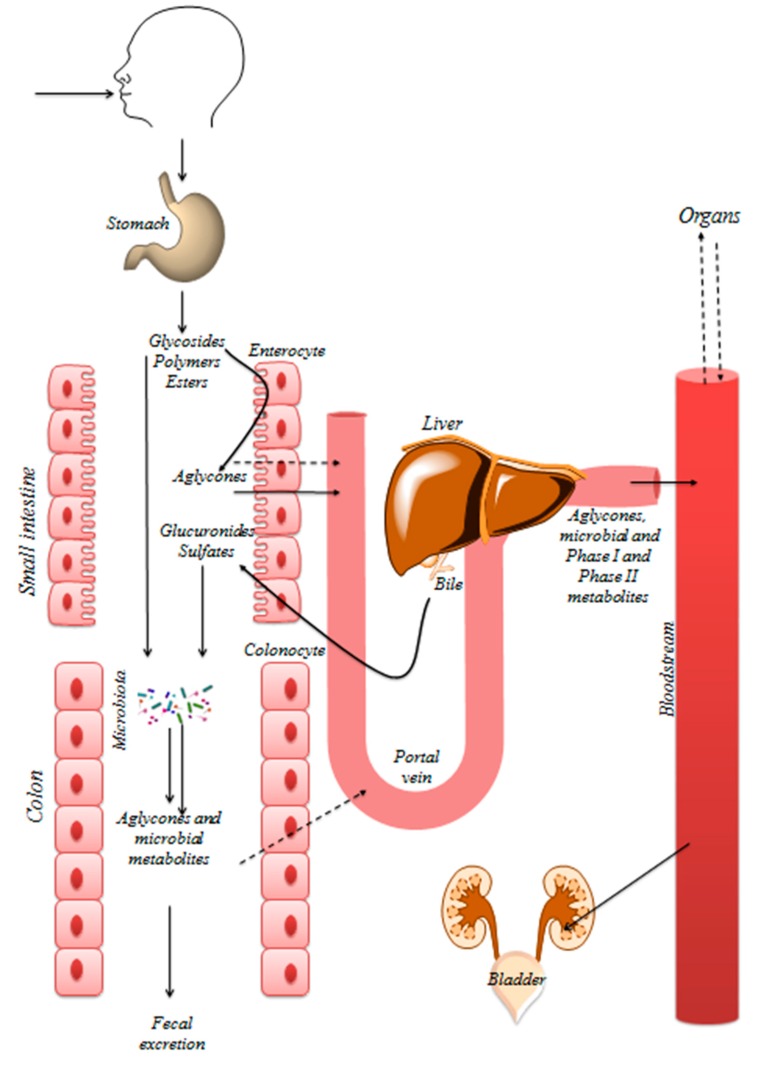Figure 2.
Schematic representation of absorption, biotransformation, and excretion of polyphenols in the human body. The gastrointestinal tract acts as a physical barrier, is covered by the mucosa, and is decisive for polyphenols bioavailability. This function is mediated by physical walls, metabolism, and passive (solid arrows)/active (dashed arrows) transport mechanisms. Polyphenols interact with salivary proteins, but they are not metabolized in the oral cavity. Moreover, most of the polyphenols resist to stomach’s acidic conditions and may be transported bound to dietary plant polysaccharides. Absorption occurs mainly at the duodenum and the proximal half of jejunum at enterocytes. Apical cell membranes of enterocytes contain microvilli, which increase the surface area of absorption. Passive intestinal permeability occurs mainly for aglycones and simple phenolic acids. Absorption of glycosylated compounds is usually preceded by the release of aglycones by enzymes. Free aglycones can then enter the epithelial cells by passive diffusion. Alternatively, glycosylated compounds enter epithelial cells by the active transport and are hydrolyzed by intracellular enzymes. Once inside enterocytes, polyphenols can be extruded into the lumen by efflux transporters. Compounds which are not absorbed reach the colon where they can be extensively metabolized by microbiota. Several transformations in (poly)phenols structure can occur. Most of the colonic metabolites are excreted in feces, although absorption can still take place. Then, (poly)phenols can undergo phase I and phase II reactions. Phase I reactions include oxidative and reductive reactions. Glucuronidation, sulfation, and methylation are the most frequent phase II reactions. The conjugates, being more water-soluble, are rapidly excreted through bile or urine. Metabolites can then be transported into the bile (enterohepatic recirculation) and secreted back to the duodenum. Degradation of metabolites in the intestine generates catabolites available for reabsorption (adapted from [42]).

